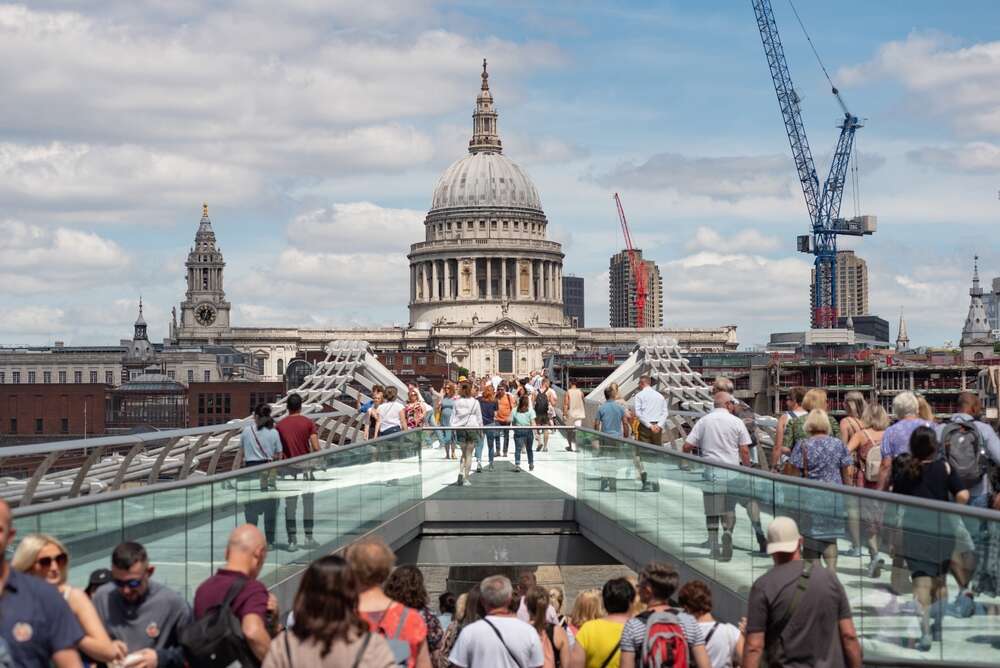
Every ten years, the Office for National Statistics (ONS) publishes the UK census, which offers the opportunity to see how the country has developed over time. Over that period, London‘s population has seen its share of demographic changes, including those caused by Brexit, soaring house prices and the Covid-19 pandemic.
Each of these upheavals will have had its own effects, but the census affords a macro perspective of the city as a whole.
So how has London’s population changed since the last census?

How much has the population of London grown?
According to the 2011 census, the resident population of London was 8,173,941. Ten years later, it has grown by 7.7% to 8,799,800.
That is slightly higher than the population growth in England and Wales, which sits at 6.7%, but lower than the east of England’s rate of 8.3% – the highest in the country by region.
Where has the population of London grown the most and least?
London’s population growth is not uniform. Instead, it appears to become more prevalent in the east and west of the city.
North and central areas of London appear to have had the lowest growth, with most local authorities seeing around a 5-10% increase.
South London has grown by similarly small amounts, while west and particularly east London have seen the most significant increase. In fact, of the five areas (excluding the City of London) that saw the greatest percentage change, four were in the east of the city – Tower Hamlets (22.1%), Barking and Dagenham (17.7%), Newham (14%) and Greenwich (13.6) – along with Hounslow in the west at 13.5%.
Only three areas of London saw a decrease in population: Camden fell by 4.6%, Westminster by 6.9% and Kensington and Chelsea by 9.6%. These local authorities, most likely not by coincidence, also have the highest average house prices in the city.
How many Londoners were born outside the UK?
Overall, the proportion of people born overseas is significantly higher in London than anywhere else in the country: 40.6% (up from 36.7%) compared with 16.8% (up from 13.4%) for the UK as a whole.
But within London itself, the balance between local authorities is changing.
Some of the areas of London with the greatest overseas-born populations saw slower growth or even declines in the number born outside the UK between 2011 and 2021.
Instead, the greatest growth tended to be in the city's outer areas, particularly to the east and west, where the population has had a historically higher proportion of British-born residents.
For example, Havering has seen the largest percentage increase at 10.1% but is still the lowest overall with 19.4%. Brent on the other hand, which has the highest percentage at 56.1%, saw the most significant decline of 2.6%.
This could be indicative of more diverse communities expanding and becoming less concentrated in specific boroughs, or the growing expense of living in areas closer to the centre of the city.
How has London’s housing market changed?
Perhaps least surprising for anyone who lives in the city, the cost of housing in London has increased considerably over the past decade.
While average prices in the most central areas of London remain the most expensive, they have not increased at the same rate as greater London, which has seen explosive growth – in some cases more than double.
Camden, Kensington and Chelsea, Westminster, and Hammersmith and Fulham saw the slowest growth at around 50%. East and south-east London saw a far greater increase, with Hackney, Lewisham, and Barking and Dagenham seeing price differences of roughly 90% to 100%.
One local authority, Waltham Forest, saw a whopping 118% increase in the ten-year period, going from the fifth-cheapest place to live in London to 19th out of 33.
Are more people moving out of London?
From the currently available census data alone it is difficult to determine whether people are specifically moving out of London. However, it can be seen that many local authorities surrounding London in the commuter belt are seeing above-average increases.
For example, Swale, Ashford and Maidstone in Kent have all seen population increases of around 11–13%, while Bedford and Cambridge have seen increases of roughly 17%. Dartford, which borders London from Kent, has seen an increase of 20% – the second highest in the country behind Tower Hamlets.
[Read more: Decarbonisation in the capital: London's journey to net zero]






